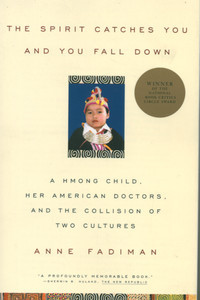What do you think?
Rate this book


341 pages, Paperback
First published January 1, 1997
“Lia’s case had confirmed the Hmong community’s worst prejudices about the medical profession and the medical community’s worst prejudices about the Hmong.”
“It was as if, by a process of reverse alchemy, each party in this doomed relationship had managed to convert the other’s gold into dross.”
“Once, several years ago, when I romanticized the Hmong more (though admired them less) than I do now, I had a conversation with a Minnesota epidemiologist at a health care conference. Knowing she had worked with the Hmong, I started to lament the insensitivity of Western medicine. The epidemiologist looked at me sharply. “Western medicine saves lives,” she said. Oh. Right. I had to keep reminding myself of that. It was all that cold, linear, Cartesian, non-Hmong-like thinking which saved my father from colon cancer, saved my husband and me from infertility, and, if she had swallowed her anticonvulsants from the start, might have saved Lia from brain damage.”
You know what rendered me speechless? When I entered “Lia Lee” into Google to see what ultimately happened to her (she died in 2012, at age 30), Google sidebar stated this: “Lia Lee. Fictional character.” And this was so staggeringly heartbreaking — this algorithm reduction of a real little girl from a real family, treated by real doctors to a book character.

Several times the planes were so overloaded they could not take off, and dozens of people standing near the door had to be pushed out onto the airstrip. … After the last American transport plane disappeared, more than 10,000 Hmong were left on the airfield, fully expecting more aircraft to return. When it became apparent that there would be no more planes, a collective wail rose from the crowd and echoed against the mountains.